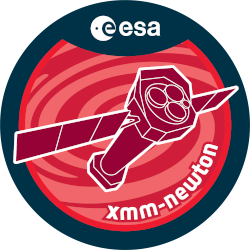

| Proposal ID | 088211 |
| Title | Juno and XMM-Newtons final search for drivers of Jupiters X-ray aurorae |
| Download Data Associated to the proposal | https://nxsa.esac.esa.int/nxsa-sl/servlet/data-action-aio?obsno=0882110401 |
| DOI | https://doi.org/10.57780/esa-kjpxumf |
| Principal Investigator, PI | Ms Affelia Wibisono |
| Abstract | Simultaneous observations with XMM-Newton and Juno over the last 3 years haverevolutionised our understanding of the coupling between Jupiters magnetosphereand ionosphere leading to new theories of how planets can produce X-rays. Forexample, evidence is building from joint XMM-Newton and Juno observations thation cyclotron waves are one of the drivers for the gas giants X-ray aurorae.However, we only have one more opportunity to utilise the unique capabilities ofXMM-Newton and Juno before the jovian explorer is due to finish its mission inJuly 2021. Juno is now in the dusk sector of Jupiters magnetosphere - a regionthat no other spacecraft will visit again for at least another decade. |
| Publications |
|
| Instrument | EMOS1, EMOS2, EPN, RGS1, RGS2 |
| Temporal Coverage | 2021-05-10T20:10:46Z/2021-06-09T08:27:09Z |
| Version | PPS_NOT_AVAILABLE |
| Mission Description | The European Space Agencys (ESA) X-ray Multi-Mirror Mission (XMM-Newton) was launched by an Ariane 504 on December 10th 1999. XMM-Newton is ESAs second cornerstone of the Horizon 2000 Science Programme. It carries 3 high throughput X-ray telescopes with an unprecedented effective area, and an optical monitor, the first flown on a X-ray observatory. The large collecting area and ability to make long uninterrupted exposures provide highly sensitive observations. Since Earths atmosphere blocks out all X-rays, only a telescope in space can detect and study celestial X-ray sources. The XMM-Newton mission is helping scientists to solve a number of cosmic mysteries, ranging from the enigmatic black holes to the origins of the Universe itself. Observing time on XMM-Newton is being made available to the scientific community, applying for observational periods on a competitive basis. |
| Creator Contact | https://www.cosmos.esa.int/web/xmm-newton/xmm-newton-helpdesk |
| Date Published | 2022-06-19T00:00:00Z |
| Last Update | 2025-08-04 |
| Keywords | "XMM", "ionosphere leading", "XMM-Newton", "final search", "gas giant", "dusk sector", "xmm newton", "jovian explorer", "ion cyclotron waves", "xray aurorae" |
| Publisher And Registrant | European Space Agency |
| Credit Guidelines | European Space Agency, Ms Affelia Wibisono, 2022, 'Juno and XMM-Newton's final search for drivers of Jupiter's X-ray aurorae', PPS_NOT_AVAILABLE, European Space Agency, https://doi.org/10.57780/esa-kjpxumf |